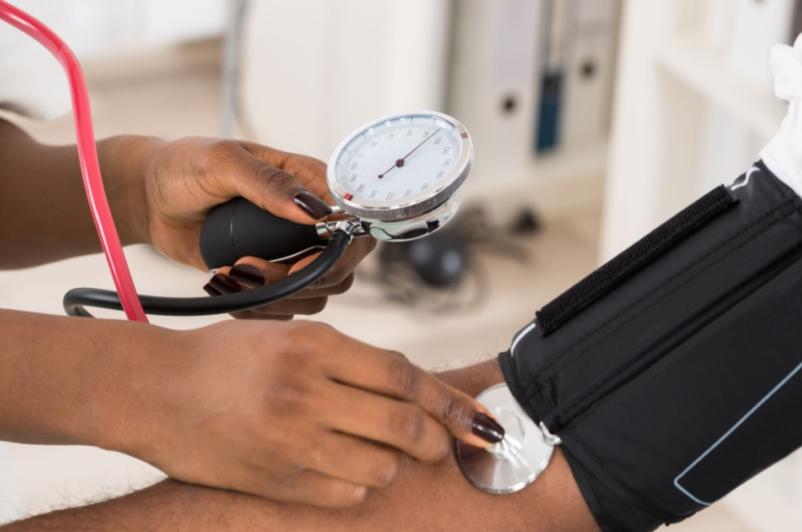

Take high blood pressure seriously
July 27, 2022
If you are diagnosed with high blood pressure, also known as hypertension, what steps should you take? First, it’s important to follow your provider’s advice and work with him or her to develop a strategy that will be best for you.
Treatments for hypertension are wide-ranging, and can include lifestyle changes and, in some cases, medication, according to healthcare providers at UHS. There are different medication categories: Some can help your heart beat more slowly and with less force. Others help your body flush out salts and fluids, relax your blood vessels or even change the nerve impulses that control the tightening of blood vessels.
To maintain a healthy blood pressure, get regular exercise (aim for 30 minutes, five times per week), reach a healthy weight, manage your stress, reduce alcohol consumption and eat a diet low in sodium, cholesterol, red meat and saturated fats. If you use tobacco products, look for cessation options that will help you quit and stay quit. For more information about hypertension, visit www.nyuhs.org.
Blood pressure is the measurement of blood volume passing through your blood vessels and the resistance it meets while the heart pumps. There are two numbers in a blood pressure reading – systolic and diastolic. Systolic – remember “S” for squeezing – is the pressure in your arteries as the heart pumps; diastolic is the pressure in your arteries between beats. Both numbers are measured in millimeters of mercury, abbreviated mm Hg.
Normal blood pressure for adults is considered to be 120/80 or less (numbers for children and adolescents are different). Readings from 120-129 systolic are classified as elevated, and move into the high blood pressure (or hypertension) range at more than 130 systolic or 80-89 diastolic; stage 2 hypertension begins at 140 systolic or more than 90 diastolic. If you have a reading of greater than 180 systolic or 100 diastolic, you should see your provider immediately. If you have elevated readings and have chest pain or headaches, or if your reading is greater than 120 diastolic, evaluation in an Emergency Department is advised.
There are two types of high blood pressure: Primary hypertension, the most common variety, has no apparent cause and develops slowly over time. Secondary hypertension usually develops quickly and is tied to another body process or illness, such as a kidney, thyroid, endocrine or adrenal issue, obstructive sleep apnea, a congenital heart defect, side effects of medications, or drug and/or alcohol abuse.
If you are experiencing hypertension, your provider may order urine and blood tests, an electrocardiogram (EKG), or an ultrasound of your heart or kidneys to determine which type of hypertension you have and how to treat it. Risk factors for hypertension include genetics, obesity, tobacco use and a diet high in fat, salt and calories. Have your blood pressure checked at least annually starting at age 40. If you have a family history of hypertension, you may be advised to start surveillance sooner. If you are obese, a smoker, or have diabetes, more frequent monitoring is also recommended.
Technological advancements mean there are more ways than ever to check your blood pressure yourself, whether you use a machine at a pharmacy or buy a device to use at home. Whatever method you choose, use the same option at the same time of day so you’re “comparing apples to apples.” If you have white-coat syndrome – high blood pressure only at the doctor’s office–track your blood pressure at home for a week before your visit and bring those numbers with you to show your provider.
UHS providers recommend that, if you have hypertension, treat it: Unmanaged high blood pressure can affect the arteries, brain, eyes, kidneys and heart, or lead to heart attack or stroke. The damage is not always visible, and in some cases is irreversible, even if you later seek care. Plus, there’s a strong correlation between hypertension and atrial fibrillation, or a-fib, which is a huge risk factor for stroke.

